Aboriginal Art history spans at least 60,000 years. Australian Aboriginal art is one of the world’s oldest ongoing artistic traditions. It is brimming with vivid and varied representations of Indigenous spirituality, culture, and kinship with the land. It embodies ancestors’ stories and profound knowledge that have been passed down through the millenia.
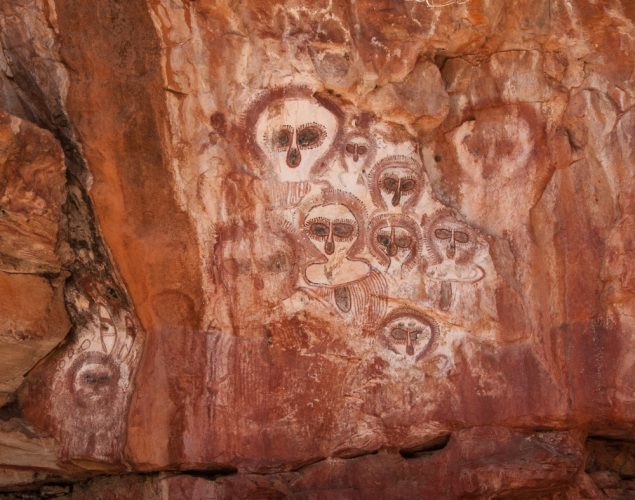
Aboriginal Art: Its History and Significance
Indigenous Australian culture and spirituality are inextricably related to its art. It serves as a vehicle for the transmission of sacred tales, sometimes referred to as “Dreamings” in addition to being a visual art form.
The world’s creation, the rules governing existence, and the spiritual bond between the people and their homeland are all visually depicted on rocks and canvases throughout the continent. In the words of the brilliant Aboriginal artist Gloria Petyarre, “Our paintings are the stories of our culture, of our people.” They demonstrate our identity, origins, and sense of place.”
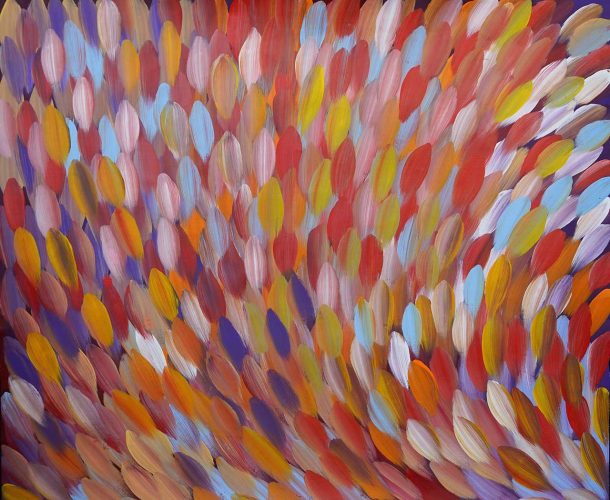
Copyright Gloria Petyarre
The Language of Symbols
Clay, plant dyes, and ochres are examples of natural materials used in Aboriginal Australian art creation. The fact that these materials come from the soil reflects the close relationship that Aboriginal people have with Mother Earth. Sand drawings, engravings, and rock paintings are examples of early Aboriginal art. To respect ancestors and uphold cultural traditions, these artworks were frequently produced as a component of ceremonial rituals.
Symbolic Language
The use of symbols in Aboriginal art is among its most characteristic elements. Indigenous artists portray humans, animals, plants, and landscapes using a sophisticated system of iconography. These symbols are more than just ornamental; they have deeper significance that is frequently only known by members of the community. An arrangement of concentric circles, for instance, depending on the context, could stand for a campsite, waterhole, or gathering spot. Additional typical symbols are curving lines that can symbolize rivers, rain, or ancestor spirits, and animal footprints that indicate the existence or migration of a specific species.
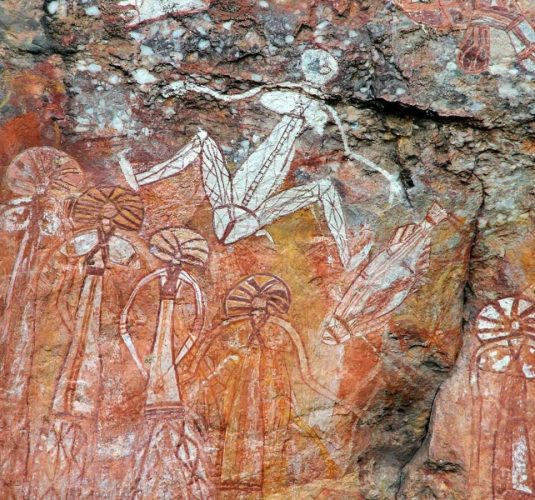
One of the most well-known Aboriginal artists and the first to be widely acknowledged in the Western art world, Albert Namatjira, discussed the significance of symbols in his work, saying, “Our art is not just painting.” It is narrating a tale that has been passed down through the ages. It concerns our identity, our past, and our future.”
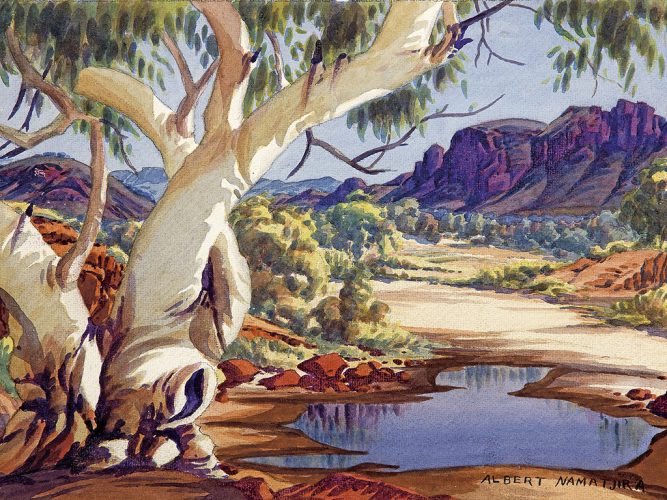
Copyright Albert Namatjira
Aboriginal Art’s Development
Although having deep roots in ancient customs, Aboriginal art has evolved over time, especially in reaction to influences from European colonization. Aboriginal life underwent significant upheaval following the entrance of British immigrants in the late 1700s, including the uprooting of villages and the loss of ancestral lands. Indigenous art was greatly impacted by these shifts, which resulted in the creation of new genres and media.
The Papunya Tula art movement of the 1970s was one of the most important events in the history of Aboriginal art. Under the direction of artist Geoffrey Bardon, a group of Aboriginal men in the isolated hamlet of Papunya in the Northern Territory initiated this trend by painting their traditional stories on canvases and boards under the direction of artist Geoffrey Bardon. This was a momentous occasion since it was the first time that Western art supplies were used by Aboriginal artists to convey their traditional stories.
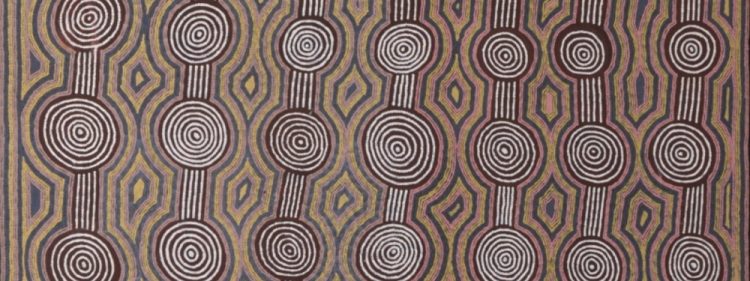
Copyright: Indigenous peoples of Papunya Tula
The “dot painting” style, which emerged from the Papunya Tula movement, is now one of the most well-known types of Aboriginal Australian art. Little paint dots are used in complex patterns to make dot paintings, which frequently represent dreams or other spiritual tales. Not only is the use of dots an artistic decision, but it also serves as a means of keeping precious information hidden from prying eyes. “The dots are like a veil,” said pioneer of the dot painting technique Clifford Possum Tjapaltjarri. “They keep our legends and mysteries hidden so that only the initiated can fully comprehend.”
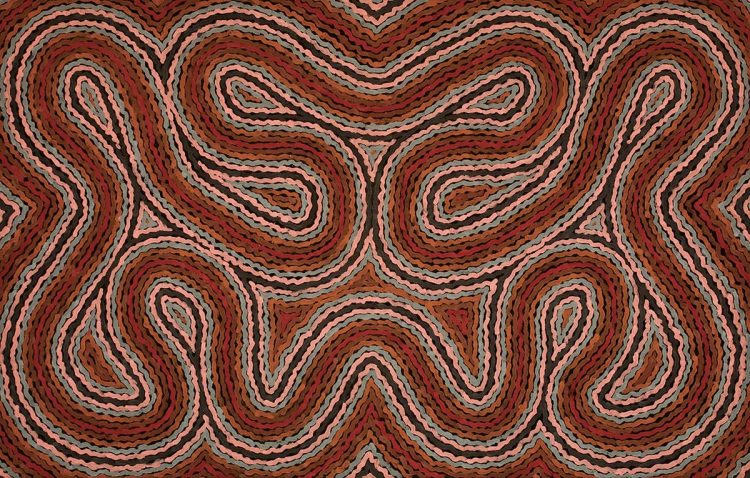
Copyright Clifford Possum Tjapaltjarri
Aboriginal Art Today
The area of Aboriginal Indigenous art is vibrant and dynamic today, with artists staying loyal to their cultural heritage while pursuing innovative new directions. Native artists in the modern day employ a variety of media in their work, such as digital media, painting, sculpture, and photography. These artists celebrate their ancestry while addressing current issues including cultural identity, land rights, and the effects of colonisation.
Emily Kame Kngwarreye is a well-known contemporary Aboriginal artist whose abstract paintings have won praise from all around the world. Her paintings, which are distinguished by vivid hues and dramatic compositions, are a reflection of her strong bond with her ancestral home, Alhalkere, which is located in Central Australia’s Utopia region. The art of Kngwarreye questions conventional Western
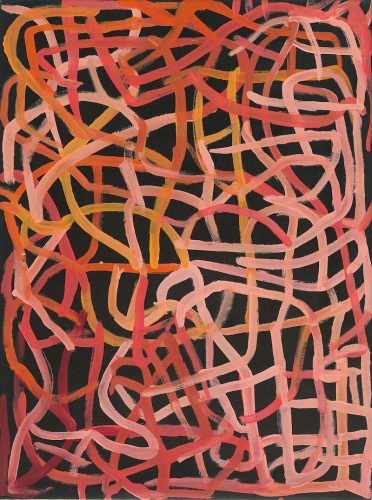
Traditional Western ideas of abstraction are challenged by Kngwarreye’s art since her paintings are strongly influenced by her cultural experiences and expertise. She said once, “I paint my nation. My art tells the tale of my homeland. It’s more than simply a photo—it’s my identity.”
Richard Bell, another well-known modern artist, is renowned for his thought-provoking pieces that tackle the politics of Aboriginal identity and the effects of colonisation. Bell’s artwork frequently addresses the marginalisation of Aboriginal people in Australian society and dispels prejudices. “Aboriginal art—it’s a white thing,” he says in his famous work “Bell’s Theorem,” criticising the commercial exploitation of Aboriginal art by non-Indigenous individuals and institutions.
The Influence of Aboriginal Art Around The World
Not only has Indigenous art become more popular in Australia, but it has also had a big influence on international art circles. Aboriginal art has been shown in prominent galleries and museums worldwide, such as the British Museum in London and the Louvre in Paris, emphasising its artistic and cultural relevance. The maintenance and revitalisation of cultural traditions have been aided by the economic opportunities that the international admiration of Aboriginal art has brought to Indigenous communities.
But there are also worries about the exploitation and cultural appropriation of Indigenous culture that have been brought up by the commercialisation of Aboriginal art. There have been cases where non-Indigenous people and businesses have created and marketed false Aboriginal art, deceiving consumers and jeopardising the pieces’ traditional authenticity. Organisations like the Indigenous Art Code were founded in reaction to these problems in order to safeguard the rights of Aboriginal artists and guarantee moral behaviour in the sector.
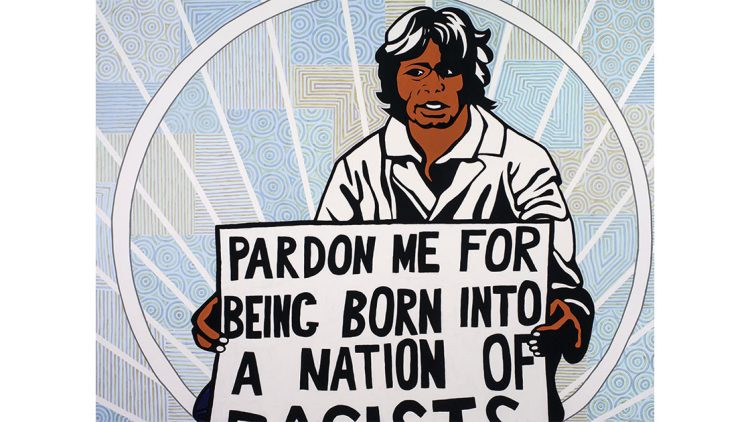
Copyright Richard Bell
Indigenous Australian culture is characterised by spiritual depth, inventiveness, and resilience, all of which are evident in its art. Aboriginal art has evolved throughout time, from prehistoric rock paintings to modern digital pieces that capture the fluidity of Aboriginal identity and experience. According to 81-year-old painter Sally Gabori, “Our art is not just about the past; it’s about the present and the future.” It’s the way we preserve our culture.”
Through their artistic expression, Indigenous artists not only conserve their cultural legacy but also actively participate in the wider community, questioning established beliefs and fostering fresh perspectives. Aboriginal art is a significant statement of a people’s relationship to their land, their ancestors, and their culture. It is a million times more than the dots and dabs used to create it, it is the language of a people finally coming into their own again.
